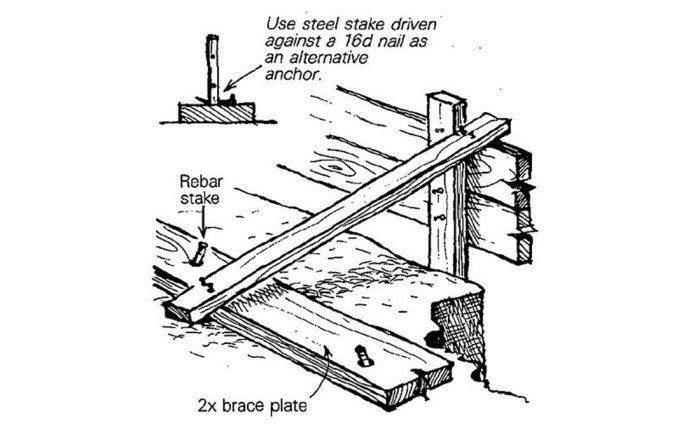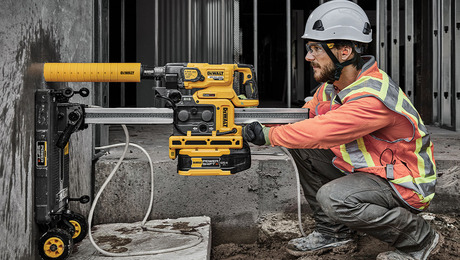
It can be frustrating to brace concrete forms in loose, sandy soil — especially when the stakes begin to creep outward as the forms are filled. Faced with these soil conditions, I recently used a 2x brace plate to anchor my form braces.
As shown in the drawing, I positioned the plate far enough from my forms to give my braces about a 1:2. slope. The plate has 1-in. holes drilled 2 ft. on center. Through these holes I drove 2-ft. lengths of #4 rebar, oriented at opposing angles. Secured this way, the plate served as a sturdy anchor for my 2×4 braces.
If you’ve got some steel stakes, use them to anchor the plate. As the end of the stake draws near to the plate, insert a 16d nail halfway through one of the holes and drive the stake a little farther until the nail begins to bend as it engages the wood. When it comes time to remove the plates, lift them out of the ground with a backhoe. Lacking the backhoe, a pair of locking pliers makes a good handle on each stake.
—Michael Hermann, Nevada City, CA
Edited and illustrated by Charles Miller
From Fine Homebuilding #41






























View Comments
OK, so you stopped your form boards from moving when you pour. But how do you keep the sandy soil from caving into the grade beam trenches? Run plywood or some barrier all the way to the bottom of the trench?
Method is okay if the only purpose of the braces is to align the forms. If you're trying to brace to resist concrete pressure against the forms, this method won't cut it.